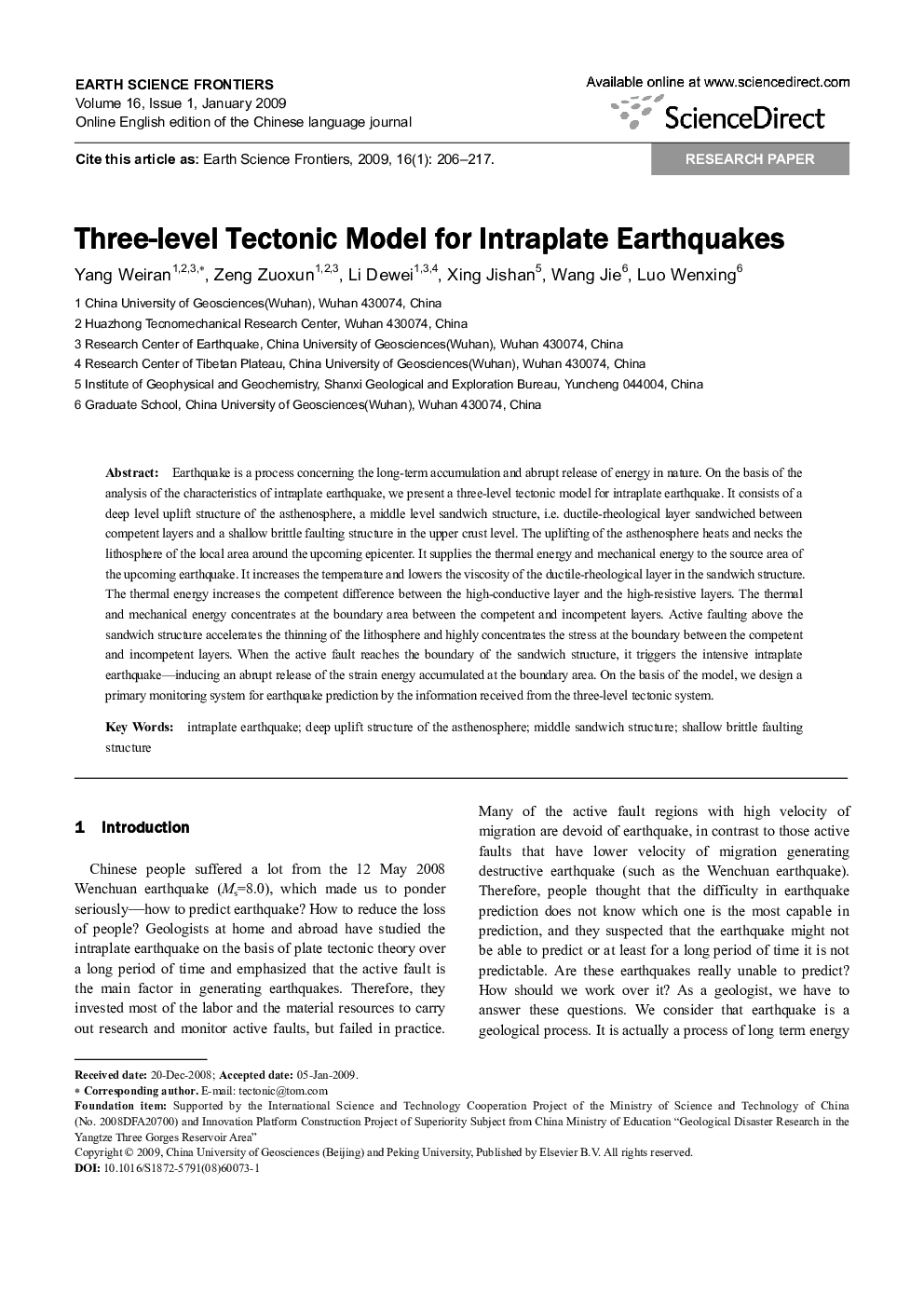| Article ID | Journal | Published Year | Pages | File Type |
|---|---|---|---|---|
| 4701497 | Earth Science Frontiers | 2009 | 12 Pages |
Earthquake is a process concerning the long-term accumulation and abrupt release of energy in nature. On the basis of the analysis of the characteristics of intraplate earthquake, we present a three-level tectonic model for intraplate earthquake. It consists of a deep level uplift structure of the asthenosphere, a middle level sandwich structure, i.e. ductile-rheological layer sandwiched between competent layers and a shallow brittle faulting structure in the upper crust level. The uplifting of the asthenosphere heats and necks the lithosphere of the local area around the upcoming epicenter. It supplies the thermal energy and mechanical energy to the source area of the upcoming earthquake. It increases the temperature and lowers the viscosity of the ductile-rheological layer in the sandwich structure. The thermal energy increases the competent difference between the high-conductive layer and the high-resistive layers. The thermal and mechanical energy concentrates at the boundary area between the competent and incompetent layers. Active faulting above the sandwich structure accelerates the thinning of the lithosphere and highly concentrates the stress at the boundary between the competent and incompetent layers. When the active fault reaches the boundary of the sandwich structure, it triggers the intensive intraplate earthquake—inducing an abrupt release of the strain energy accumulated at the boundary area. On the basis of the model, we design a primary monitoring system for earthquake prediction by the information received from the three-level tectonic system.
